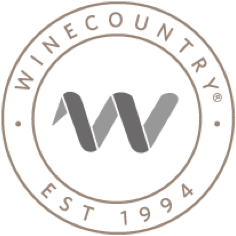Petaluma Gap AVA
Located only 25 miles north of San Francisco surrounding the town of Petaluma, Petaluma Gap is the newest winegrowing region to be established in Sonoma County, recognized as an AVA in 2017. This distinctive region, planted to over 4,000 acres of vines, sees large diurnal temperature shifts from day to night, thanks to strong coastal influences like heavy fog and wind that funnel in from San Pablo Bay. About 75% of the region is dedicated to cool-climate darling Pinot Noir, while the remainder is planted to Chardonnay and Syrah.
Wineries in this AVA to Visit: Adobe Road Winery, Keller Estate, McEvoy Ranch
Pine Mountain – Cloverdale Peak AVA
Located at the top of Pine Mountain at elevations between 1,600 and 2,600 feet, this small, mountainous AVA on the border of Sonoma and Mendocino counties is one of the highest grape growing regions in California. Its steep topography, rocky volcanic soils, and cool, yet sunshine-filled days above the fog line provide idyllic conditions for complex Cabernet Sauvignon, for which it is most known for. You’ll also find small amounts of Zinfandel, Merlot, Malbec, and Sauvignon Blanc planted.
Wineries in this AVA to Visit: Pine Mountain Vineyards
Rockpile AVA
This dramatic, rugged AVA on the west of Lake Sonoma is known for its red varieties, such as Zinfandel. The terroir here is heavily influenced by the high elevation (roughly 1,900 feet), where rocky soils, steep hillsides, and long days with plenty of sun exposure allow the grapes to develop more concentrated, rich flavors. Besides Zinfandel, you’ll find small amounts of Cabernet Sauvignon, Petite Sirah, Merlot, and Syrah, though there are no wineries to visit.
Wineries in this AVA to Visit: There are no wineries within its borders, but these producers source grapes from the Rockpile AVA: Mauritson Wines, Rockpile Vineyards, Truett Hurst Winery
Russian River Valley AVA
The Russian River Valley AVA, established in 1983, is a highly regarded growing region for Pinot Noir and Chardonnay. Characterized by its cool climate and coastal fog that travels in from the Pacific along the Russian River, Russian River’s climate allows for a slow ripening of the grapes, resulting in wines of balanced acidity and complexity.
Wineries in this AVA to Visit: J Vineyards & Winery, MacRostie Winery, Landmark Vineyards, Moshin Vineyards, Gamba Winery



















